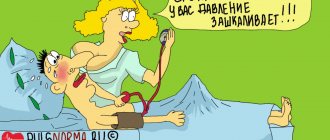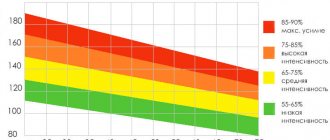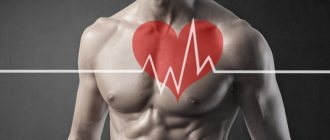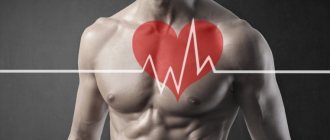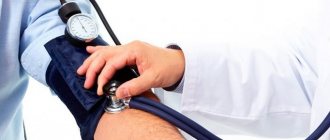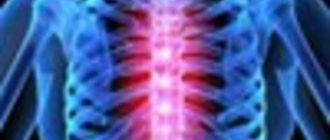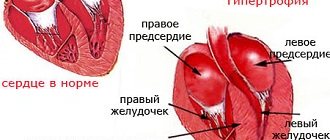Frequent daytime sleepiness is one of the symptoms of many diseases. Among them is arterial hypertension. Experienced hypotensive patients know: as soon as blood pressure drops, lethargy immediately arises and an unbearable desire to sleep occurs.
However, there is also an inverse relationship: lack of sleep affects the condition of blood vessels and blood pressure levels. Let's figure out what the relationship is between insomnia and blood pressure problems.
The effect of sleep on blood pressure
Several years ago, specialists from a hospital in Seoul (South Korea) conducted a large-scale study in which 47,000 people took part. The results were published in the Journal of the American Heart Association. They confirmed some of the assumptions of cardiologists and alerted many patients with insomnia.
During the Seoul study, subjects were asked about the quality and duration of their nightly sleep. Everyone had their blood pressure measured and their blood taken for analysis. It turned out that people who sleep less than 7 hours a day are more likely to suffer from arterial hypertension. Inadequate night rest leads to a decrease in the elasticity of the walls of blood vessels and metabolic disorders. In people suffering from insomnia, calcium is deposited more heavily on the walls of the arteries. This leads to their gradual narrowing and increased blood pressure.
What should your blood pressure be like at night? 4 profiles
One of the readers in the article Arterial hypertension: summary of European recommendations 2021 found the phrase:
Night-time BP (blood pressure) levels are a better predictor of cardiovascular events than daytime BP.
The reader had a question about what blood pressure should be at night compared to during the daytime. In this article I will tell you how blood pressure should change at night and what problems may lie here.
Circadian blood pressure cycles
Changes in blood pressure levels during the day have general patterns
both in healthy individuals and in patients with arterial hypertension.
- The morning peak in blood pressure occurs between 6 a.m. and 12 a.m. (which is why most antihypertensive drugs must be taken early in the morning to have time to work).
- This is followed by a slight decrease and stabilization of blood pressure levels.
- The evening peak in blood pressure is lower than the morning peak and occurs around 19:00.
- Then blood pressure decreases. Minimum numbers are observed from midnight to 4 am.
- After 4 am, blood pressure gradually increases and then increases sharply 1 hour before waking up.
Normally, from 4 to 10 o'clock the morning rise rate is
systolic blood pressure should be less than 10 mm Hg. Art. per hour, diastolic - less than 6 mm/hour. The total rise should not exceed 56 and 36 mmHg. Art. respectively.
Morning is the only period during the day when increased clotting
blood. Patients with cardiovascular diseases are more likely to experience cardiovascular accidents (heart attacks and strokes).
At night, average blood pressure should decrease by an average of 10-20% compared to daytime pressure. The person is lying down or sleeping, he is relaxed, so high blood pressure is not required. But if the patient works the night shift or does not sleep, blood pressure at this time almost does not decrease and may even increase compared to daytime.
24-hour blood pressure monitoring (ABPM)
For comparison, average daytime and average nighttime values obtained during ABPM
(24-hour blood pressure monitoring). For ABPM, the patient wears an automatic blood pressure monitor for a day or longer, which turns on regularly, usually every 15-30 minutes during the day and every 30-60 minutes at night, pumps air into the cuff, measures blood pressure and stores the readings in the internal memory for subsequent analysis.
Standards for average blood pressure values
according to ABPM data recommended by the Russian Medical Society for Arterial Hypertension and the All-Russian Scientific Society of Cardiologists:
- during the day: from 100/60 to 140/90 mm Hg. Art.,
- at night: from 86/47 to 125/80 mm Hg. Art.
24-hour blood pressure monitoring is a simple but very useful test. ABPM allows you to calculate several indices (coefficients) and clarify the risk of complications or the likelihood of developing hypertension in doubtful cases.
There is a story on the Internet about daily blood pressure monitoring. Now I went to the cardio center. We hung up a device for daily blood pressure measurement. A cuff on the arm and a motor in the purse. Periodically measures blood pressure. On the way back, we found out some two guys - like who is he, where is he from, is there any little things? So we were standing around, talking, the situation was heating up, and then this little motor started humming—the cuff was pumping. Out of surprise, I straightened up and froze (I forgot something about him). These two guys also stared at me in amazement - suddenly it started buzzing, and my left arm was pumping up before my eyes! Then the engine stalled, and I, in a robotic voice, with a glazed look into nowhere, said: “Combat mode is on.” How they ran away... You had to see it!
4 groups (profiles)
Although blood pressure should drop by 10-20% at night, in reality different situations are possible.
According to the degree of reduction in nocturnal blood pressure in the English and Russian scientific literature, 4 groups (profiles)
of people:
- dippers
, or dippers (English dip - to go down, dive, dive) - at night blood pressure is 10-20% less than during the day. This is the norm. This reduction should occur in healthy people; - overdippers
, or overdippers (English over - too, too much) - at night blood pressure decreases by more than 20%. If blood pressure is initially low, an excessive decrease may be dangerous; - non-dippers
, or non-dippers (the particle non means negation) - nighttime blood pressure does not decrease enough, by no more than 10%; - night-peakers
, or night-peakers (English peak - peak, top) - night blood pressure rises above daytime blood pressure. This is a rare, but most unfavorable situation in hypertensive patients.
When assessing the results of nighttime blood pressure monitoring, you must definitely pay attention to periods of time without sleep, restless sleep, and getting up. For example, turning from one side to the other leads to an increase in blood pressure by 20 mmHg. Art. The patient should reflect these points in a diary, which is kept in parallel with ABPM.
Now let's learn more about each group and what it means.
Dippers
A decrease in blood pressure at night by 10-20% (dippers) is a normal and desirable situation. Some authors include here a reduction in blood pressure even up to 22%. In patients with the dippers profile, the blood pressure graph at night looks like a bucket-shaped depression.
Overdippers
If nighttime blood pressure is on average lower than daytime blood pressure by more than 20-22%, such subjects fall into the overdippers group. With a sharp and excessive decrease in blood pressure at night, the likelihood of fainting (and injury) when getting up to go to the toilet increases, as well as the risk of ischemic complications (lack of blood supply) to the brain and heart. Episodes of hypotension
periods of time with blood pressure below 90/60 mm Hg are considered. Art. during the day and below 80/50 mm at night. If the patient is being treated for hypertension, the treatment should be adjusted.
Non-dippers
A decrease in blood pressure at night of less than 10% (non-dippers) gives a “monotonous” daily graph of blood pressure levels over time. There is no significant decrease at night. This is an unfavorable situation that often occurs with secondary hypertension
(due to some other disease), for example:
1) with renovascular
hypertension. Blood pressure is persistently and persistently elevated and is difficult to treat. This occurs when the renal arteries are narrowed (stenosis) by 50-70% or more, when the kidneys are poorly supplied with blood and increase the production of renin to increase blood pressure and improve their blood flow. There are 2 main causes of narrowing of the renal arteries:
- 80% (more often in men) have atherosclerotic stenosis
(due to the abundance of atherosclerotic plaques). It has been established that if a patient has atherosclerosis of the arteries of the heart or lower extremities, then with a 40-45% probability he will also have damage to the renal arteries; - 20% (more often in women) have fibromuscular dysplasia
. This is an abnormal thickening of the artery walls that is not associated with atherosclerosis or inflammation. The reason is unknown. The narrowing can be single or multiple and alternate with areas of dilation of the artery (aneurysm). Fibromuscular dysplasia can also affect the arteries of the brain, stomach and intestines, and lower extremities.
Rare causes of renal artery stenosis include:
- embolism (blockage by a detached blood clot),
- injuries,
- dressing during operations,
- compression of the renal artery by a tumor.
2) primary hyperaldosteronism
(Conn's syndrome) also gives a “monotonous” blood pressure graph without a clear decrease at night. Conn's syndrome is caused by a benign tumor of the adrenal gland that secretes aldosterone uncontrollably. Excess aldosterone leads to sodium and water retention in the body (edema) and loss of potassium in the urine (blood potassium levels below 3.5 mmol/L are accompanied by muscle weakness and ECG changes).
3) pheochromocytoma
- a benign tumor of the adrenal glands that uncontrollably releases the hormones adrenaline and norepinephrine into the blood. There is a paroxysmal form (BP increases in the form of characteristic attacks with a feeling of fear, anxiety, trembling, sweating, palpitations, headache, nausea) and a permanent form (BP is constantly increased).
4) with malignant
arterial hypertension.
This is a very high, persistently elevated blood pressure (above 180/120 mm Hg) with damage (necrosis) to the walls of blood vessels, which can lead to strokes, papilledema (vision loss), ischemia and dysfunction of various organs. The vast majority of cases of malignant hypertension are caused by damage to the kidneys, renal arteries or hormonally active tumors (pheochromocytoma, primary hyperaldosteronism);
5) for diabetes
(due to hyperglycemia, the innervation of the heart and blood vessels is disrupted);
6) after transplantation
(heart transplants);
7) with chronic renal failure (chronic renal failure);
for sleep apnea syndrome (more about it below).
Night speakers
If blood pressure is higher at night than during the day
oh, this is the rarest, but at the same time the most unfavorable situation. Normally, neither children nor adults have a night-peakers profile.
The reasons are the same as for the non-dippers profile, but I will separately mention sleep apnea syndrome
. During sleep, due to relaxation of the body muscles, the walls of the pharynx collapse and block the path of air. Apnea occurs (a period of no breathing when air cannot enter the lungs). Apnea lasts on average 20-30 seconds. Then, due to a lack of oxygen in the blood, the respiratory center is activated, a partial awakening occurs with an increase in the tone of the muscles of the pharynx and the restoration of its patency. This sounds like a snore followed by a series of rapid, deep breaths, usually accompanied by heavy snoring. The patient then falls back into deep sleep and the cycle repeats. During the night there are up to several hundred cycles of stopping and resuming breathing. Deep phases of sleep completely or partially disappear. The patient does not sleep well, but is not aware of his micro-awakenings and does not remember them the next day.
One of the subjective signs of sleep apnea syndrome is a feeling of shallow, unrefreshing sleep.
. Patients get up in the morning sleep-deprived and often feel very sleepy during the day.
Sleep apnea syndrome occurs:
- in 90-95% of people with severe obesity (body mass index greater than 35);
- those who snore during their sleep (not all snorers have sleep apnea syndrome, but this syndrome practically does not exist without snoring);
- during pregnancy,
- in women during menopause.
There will be a separate article about sleep apnea syndrome.
The dangers of insufficient blood pressure reduction at night
High blood pressure has a devastating effect on arteries and target organs
(brain, heart, kidneys, eyes). If blood pressure is elevated at night, the pathological process accelerates. As a result, they develop:
- hypertrophy of the left ventricular myocardium (in the future this contributes to arrhythmias and the development of chronic heart failure),
- IHD (coronary heart disease) and increased mortality from myocardial infarction,
- strokes,
- kidney damage with the appearance of albumin in the urine (microalbuminuria) and the development of renal failure,
- retinopathy (damage to the retina of the eye).
Why do we get sick
Many common diseases today - obesity, diabetes, hypertension, etc. - are a direct consequence of the modern lifestyle. We live in a fairly safe world. You no longer need to constantly run away from predators, earn food with sweat and blood, starve for weeks because frost hit or you couldn’t shoot anything.
All these realities of primitive life are in the past. Now we go to work and to the supermarket by car, we constantly have access to a large amount of high-calorie food, after eating, we lie on the bed for hours and hardly move. This mode of life is comfortable, but our genes are “tuned” to something else—active activity.
An excess of consumed calories and a lack of physical activity lead to metabolic disorders. The consequence is diseases such as diabetes and hypertension.
Normal blood pressure during sleep
In a healthy person, during the period of daytime wakefulness and during sleep, the pressure should be within the average acceptable values. Everyone has their own blood pressure norm at which a person feels good and comfortable. On average, blood pressure readings should not go beyond the range of 90/60-130/60 - this is normal pressure. But when blood pressure rises or falls significantly, this is a signal that pathological processes are occurring in the body, and this negatively affects the functioning of the cardiovascular system.
How to protect yourself from arterial hypertension
In order to avoid problems with blood pressure, you need to:
- Balance your appetite with your lifestyle. People who engage in intellectual work and move very little should consume no more than 1,700 calories per day with a body weight of 70 kg.
- Exercise. Morning jogging and training in the gym will help you burn off extra calories and normalize your metabolism.
- Sleep 8 or more hours a day. Healthy sleep not only prevents arterial hypertension, but also helps fight depression, voracious appetite, and nervous tension.
In order to sleep well all night, you should choose a high-quality mattress, ventilate the room in the evening and not eat too much “for bedtime.” If physical activity and sleep hygiene do not help get rid of insomnia, you should consult a doctor. Perhaps the cause of this condition is some kind of nervous or endocrine disease.
Treatment of nocturnal hypertension
The most pleasant and delicious thing in treating hypertension or hypotension is, of course, drinking teas with the addition of lemon and honey.
Control and treatment of nocturnal hypertension should not be situational, and if a person suffers from such a pathology, the doctor must fully examine the patient and prescribe a course of drug therapy. This includes not only drugs that normalize blood pressure, but also diuretics, vitamins, and drugs that normalize heart function and restore vascular tone and resistance. The doctor prescribes a treatment regimen, which it is important to strictly adhere to and under no circumstances remove or add any foreign drug yourself. If the patient feels that there is no improvement, it is worth informing the doctor, who will analyze the situation and change the medicine if necessary.

